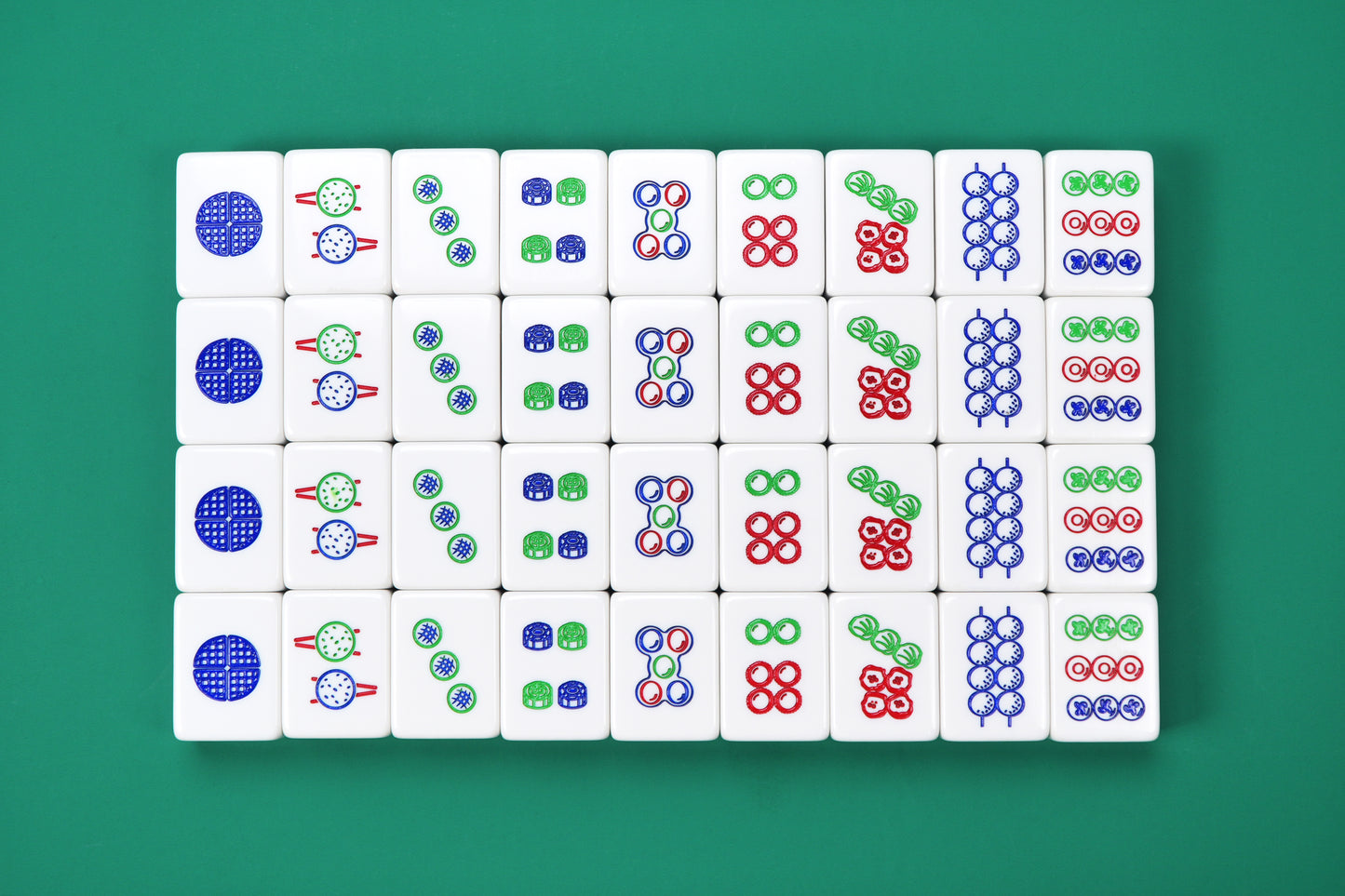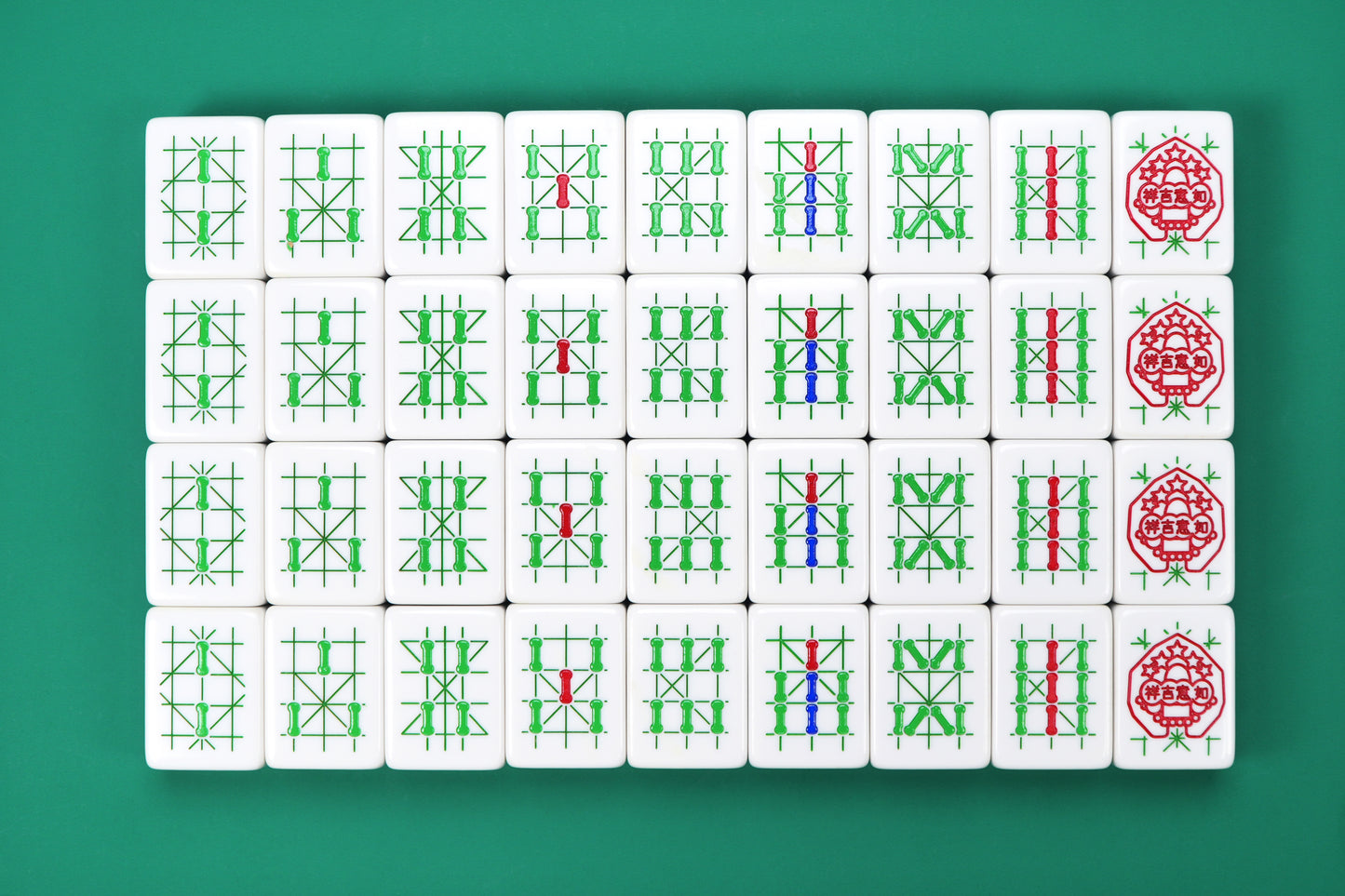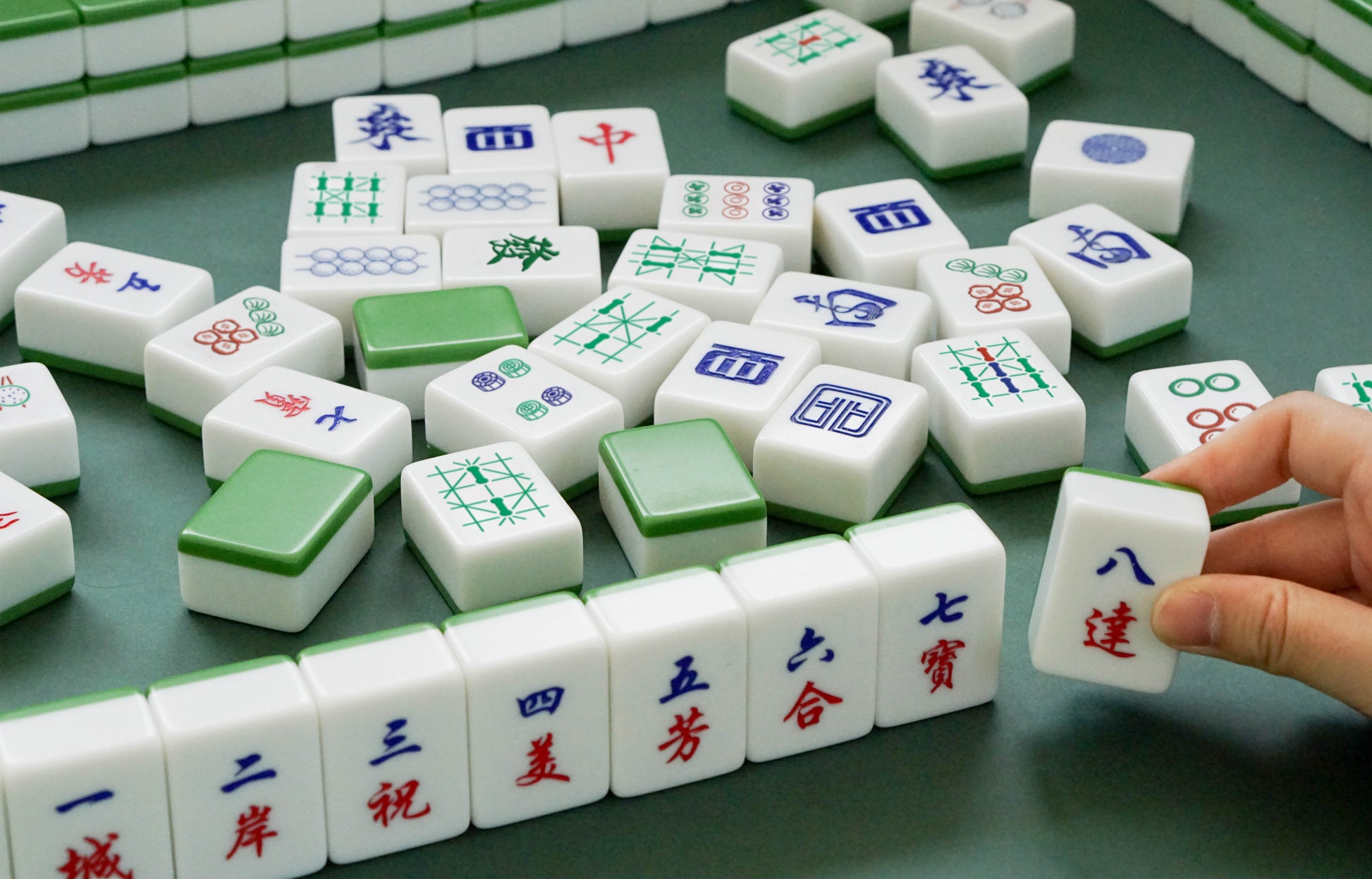Hong Kong Thematic Mahjong Set
Hong Kong Thematic Mahjong Set
Our original Hong Kong-themed mahjong features elements uniquely found in Hong Kong - street food as dots, bamboo scaffolding as bamboos, San Po Kong street names as characters, district council logos as winds and iconic architectures as flowers.
Product details
- Chips, dice, wind included
-
Tile back colour options: green, light blue, dark blue, black, white, pink or red
Default in green with stock available, made to order otherwise (4-5 weeks production) - Dimension of tile: 39mm x 29mm x 2mm
- Dimension of box: 38cm x 28cm x 8.5cm
Custom back of tile
You may also customise the mahjong set by adding a back design. Instruction for custom back of tile can be found here
Share
Couldn't load pickup availability








Play it the Hong Kong Way - Product Story
Despite I was recognized as an artist, I never create art too seriously. Every time, I think I am just playing with things in hand or whatever interests me. Among these, my greatest toys are probably different forms of waste, ranging from electronic waste, badminton, used light bulbs to old clothes and banners.
As someone who loves Hong Kong very much, its diverse faces and culture always attract me and ask me to play with them. Over the years, these not-too-serious creations start to build up a portfolio and now, I name it the “Play it the Hong Kong Ways” collection.
In it, the best-known piece is probably my special edition of Hong Kong mahjong, which has been made into tiles of giant A3 size to the actual table size. In it, I try to embed as many as I can different facets of Hong Kong.
For the circle suit, I picked the Hong Kong street foods. The one is the waffle 格仔餅we eat with butter, sugar, peanut butter and condensed milk like sandwiches. The two are skewered rice pudding cakes, 砵仔糕, which are commonly found in two favours of brown and white sugars with red beans steamed in small porcelain bowls. The three is the famous east meet west pastry, Pineapple Buns 波羅包 while the four is a box of traditional moon cakes. The original five dots arrangement reminds me of the crispy eggettes, 雞蛋仔while the six gives half a dozen of egg tarts which consist of an outer layer of pastry and an egg custard filling. The seven is two combinations of dumplings, 蝦餃with shrimp and 燒賣with a mix of pork, shrimp and mushroom, which are among the most famous types of Chinese Dim Sum. The eight give two skewers of curry fish balls 咖喱魚蛋while the nine are an assortment of two nostalgic biscuits, one in the shape of a Donut 水泡餅and the other called as “Flower tower” biscuit 花塔餅 which features a swirling cone of rainbow colour sugar topping.
For the bamboo suit, Hong Kong’s famous tradition of bamboo scaffolding seems perfect for the theme. Apart from following the original geometry to compose the numbers 2 to 9 with verticals and diagonals, for the number one, the decorative flower board 花牌 handmade over bamboo subframes makes a perfect replacement for the bird on this irregular tile in the suit.
For the character suit, for the first two tiles, one city and two shores are used, which replaces the earlier one country and two systems to avoid any political overtone. The three to eight are street names in Sun Poi Kwong, all are words of virtues and blessings. The nine combines with the word dragon to mean Kowloon which literally means nine dragons.
While the red, green and white tiles are kept as original, the east, south, west and north characters were replaced or embedded with the logos of the corresponding District Council.
Four famous towers and four iconic constructions in Hong Kong were made into two pairs as the Seasons and Flowers tiles. They are inscribed respectively with the Chinese words for Financial Centre and the Pearl of the Orient, which explains how Hong Kong is positioned.
Apart from Mahjong, in the series of “Play it the Hong Kong way”, I have created a lot of other games to show different facets of Hong Kong culture.
I have created a set of cards to show Hong Kong people’s wisdom in facing the problem of space scarcity as 13 ways of saving space, each with four real examples in Hong Kong. These 13 ways can be grouped under four strategies, namely packing horizontally, packing vertically, freeing from the ground and time-sharing use of space. For an exhibition in Los Angeles, I have turned them into 13 sets of automata with mechanisms responding to the ways. Apart from physical games, I have also turned them into a simple VR game in which players have to open the door that shows the right examples of a particular way in order to escape from the room. If you want to play my game, you can find the link in the description below.
In another piece, I designed hopscotch to tease Hong Kong people’s lifelong struggle in pursuing space for a better home, starting from the smallest subdivided unit, 劏房, self-sufficient Nano flat納米樓, to apartments for a bigger family and finally ending as an urn of ash at home waiting for their niche in a columbarium.
To re-create a vanished childhood game called Recreational Game which plays in a similar way to the Snake and Ladder, I made this Up and Down game to let the players commute vertically within buildings, attractions and landmarks of Hong Kong to show how three-dimensional the city is. Apart from the traditional board game, it was also turned into a digital game played with a giant dice.
This game is called The Running Man, Teen and Kid. The three figures represent Hong Kong people in three different age groups having their busy daily life. The man is torn between work, family and friends, the teen between studies, exams and personal interests, and the kids between all the skill and interest activities their parents arranged for them.
There are many other pieces like the Giant Jenga blocks using Choi Hung Estate as the building blocks, the chess that shows how old buildings are displaced by new buildings, and the Chinese chess that shows the polarized tech worlds between US and China with YouTube and What’s app at the US side and Bilibili and Wechat on the Chinese side.
I hope my collections will grow further and I have more to share with you in future.
- Q, founder of Glocal Mahjong








